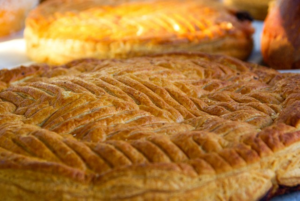Bread has long held a special place in French culture, symbolizing sustenance, community, and even identity. The phrase “daily bread” isn’t just a metaphor in France; it’s a reflection of how deeply embedded bread is in the French way of life. From rustic country loaves to the world-famous baguette, bread is a staple of French cuisine and an emblem of the nation’s culinary artistry.
The Historical Roots of French Bread
The history of bread in France dates back thousands of years, with its origins deeply rooted in the agricultural practices of ancient civilizations. Wheat cultivation in France can be traced back to the Gauls, who were known for their early bread-making techniques. However, it was during the Middle Ages that bread began to take on a more central role in French society.

In medieval France, bread was the cornerstone of the diet for both the rich and the poor. The type of bread consumed varied according to one’s social status: the wealthy enjoyed fine white bread made from sifted flour, while the lower classes typically ate darker, coarser bread made from whole grains. This division was so pronounced that bread often reflected the hierarchical structure of society.
The Rise of the Baguette
The baguette, now the quintessential symbol of French bread, has a relatively recent history. It wasn’t until the early 20th century that the baguette became widely popular. Some historians suggest that its rise was facilitated by a 1920 law that restricted bakers from working before 4 a.m., making it difficult to produce traditional round loaves in time for breakfast. The baguette, with its shorter baking time, became an ideal solution.

The baguette’s slender shape, crispy crust, and airy crumb quickly captured the hearts of the French public. Today, it is impossible to imagine French life without the sight of a baguette tucked under someone’s arm as they walk home from the boulangerie. The baguette is more than just food; it is a cultural icon, representing the simplicity and elegance of French culinary tradition.
The Art of French Breadmaking
French breadmaking is considered an art, with each step in the process requiring skill and precision. The traditional method of making French bread involves a long fermentation process that develops deep flavours and a chewy texture. The ingredients are simple—flour, water, yeast, and salt—but the techniques are what set French bread apart.

Artisan bakers, or Boulangers, often start their day in the early hours of the morning, ensuring that fresh bread is available to customers when the boulangeries open. The quality of French bread is so highly regarded that in 1993, the French government established the “Décret Pain,” a law that defines what constitutes traditional French bread, ensuring that the methods and quality remain consistent across the country.
Bread as a Cultural Symbol
Bread in France is not just a daily necessity but a cultural touchstone. It is present at nearly every meal, often accompanied by butter, cheese, or simply enjoyed on its own. The ritual of buying fresh bread daily is deeply ingrained in French life, and the boulangerie is a cornerstone of every neighbourhood, often serving as a gathering place for the community.
Moreover, bread is woven into the fabric of French customs and traditions. For example, the sharing of bread during meals is seen as a symbol of unity and hospitality. Bread also plays a central role in religious and ceremonial practices, such as in the celebration of Epiphany with the Galette des Rois, a special type of bread or cake that includes a hidden figurine, or fève.

Conclusion
The tradition of bread in France is a testament to the country’s dedication to craftsmanship, quality, and the simple pleasures of life. From the rustic loaves of the past to the iconic baguette of today, bread continues to be a vital part of French culture and identity. It is a tradition that has been carefully preserved and passed down through generations, ensuring that the art of French breadmaking remains as vibrant and essential as ever.
Some references
- Encyclopaedia Britannica provides a thorough overview of the baguette’s contested origins and its evolution into a symbol of French culture. This source also discusses the baguette’s recent recognition by UNESCO as part of France’s intangible cultural heritage (Encyclopedia Britannica: https://www.britannica.com/topic/baguette-bread).
- Wikipedia offers insights into the historical context of the baguette’s development, including the influence of steam ovens introduced by Austrian bakers and the impact of early 20th-century labor laws on bread production in France (Wikipedia: https://en.wikipedia.org/wiki/Baguette).
- History Tools delves into the baguette’s rise in popularity due to factors like the availability of white flour and modern baking techniques. This source also emphasizes the cultural importance of the baguette in French society and its regulatory protection under the 1993 “Décret Pain” (History Tools: https://www.historytools.org/stories/the-french-baguette-a-crusty-chronicle-of-a-culinary-icon).
- Busby’s Bakery discusses the transformation of French bread-making practices in the early 20th century, highlighting the baguette’s adaptability and its pivotal role in French daily life. This source also explains the impact of regulations on maintaining the traditional methods of baguette production (Busby’s Bakery: https://www.busbysbakery.com/the-history-of-the-french-baguette).
- UNESCO provides official recognition of the artisanal know-how and culture of baguette-making, underscoring the importance of preserving traditional baking techniques and supporting local bakeries as part of France’s cultural heritage (UNESCO – Intangible Heritage Home: https://ich.unesco.org/en/RL/artisanal-know-how-and-culture-of-baguette-bread-01883).